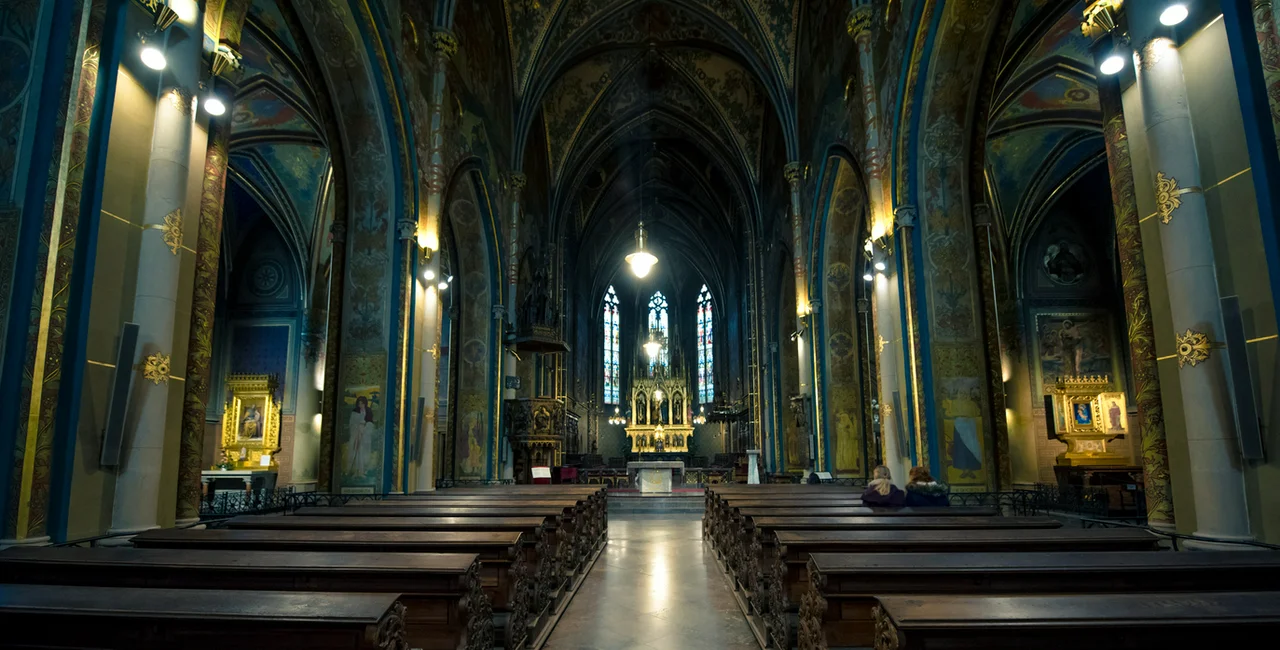Prague is one of 10 cities in the world to claim to have a relic from St Valentine, the legendary figure who lends his name to the holiday of love.
One of St Valentine’s relics, a chip of a shoulder blade, was found in 2002 in a gold-and-glass Baroque reliquary that had been forgotten in a storage closet in the Basilica of Sts Peter and Paul at Vyšehrad. It was rediscovered during an inventory, along with some other valuable treasures, and had likely been lost for over a century.
The Vyšehrad church underwent a neo-Gothic transformation in 1885–87 and again in 1902–03. It is likely that the Baroque reliquary and other items in the same style were put into storage at one of those times, as they didn’t match the austere new décor.
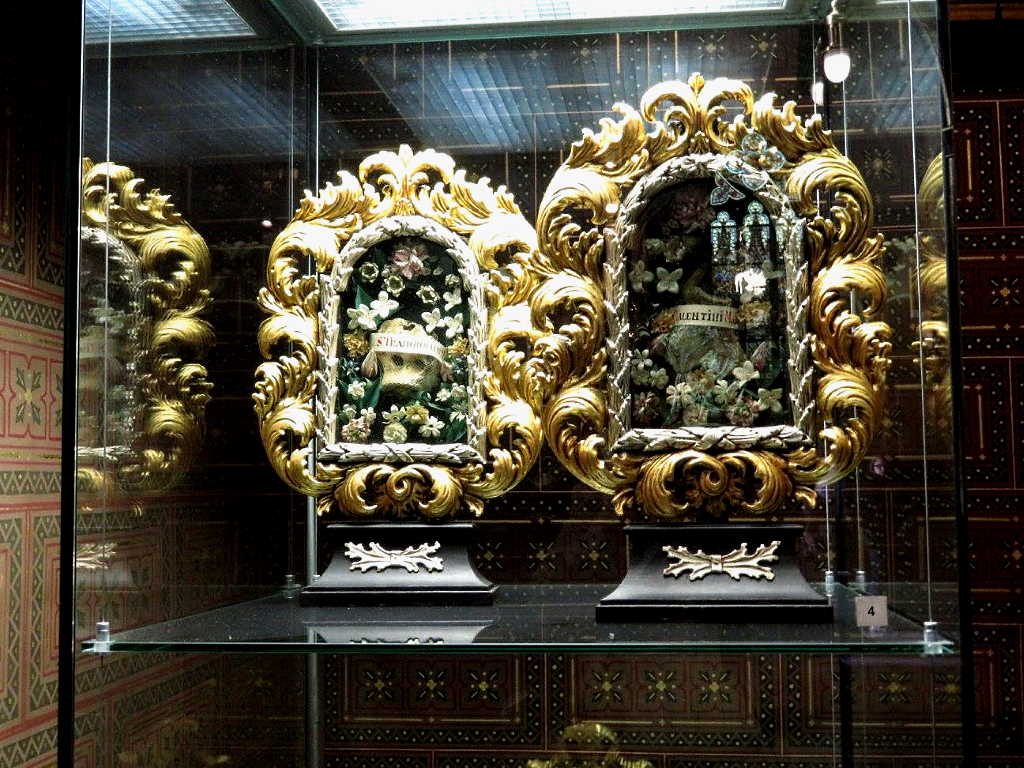
While St Valentine had by the end of the 19th century had become a very popular figure in Western Europe and even the United States, that was not the case in Central Europe. St Valentine’s Day only became popular in Prague after the Velvet Revolution.
This particular relic had never been seen as a key possession or attraction of the church, unlike in most other churches around the world that have some of this saint’s relics.
Other tangible items at the Vyšehrad church, such as an icon called Our Lady of the Rain, an illuminated Gospel manuscript called the Vyšehrad Codex and the stone cenotaph of St Longinus held more importance. The icon and codex are so valuable that the church now only has copies, as the originals are in the National Gallery and National Library.
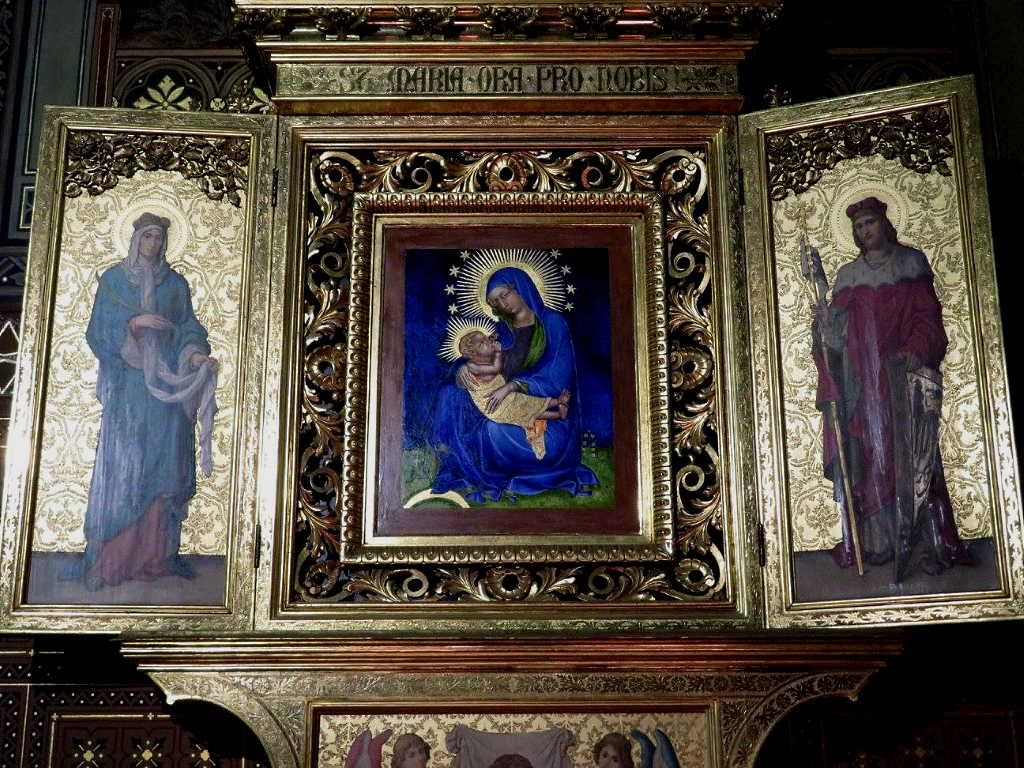
New mothers still come to say a prayer in front of Our Lady of the Rain, which has been traditionally linked to the health of mothers and babies.
Currently the St Valentine relic is in a rather crowded niche near the church’s main door, along with other reliquaries, a Pieta sculpture from the 1890s and some paintings.
How the relic of St Valentine made its way to Vyšehrad is open to speculation. Most likely it came during the reign of Emperor Charles IV, who was an avid collector of religious items. He also brought to Bohemia a piece of wood and a nail that are alleged to have come from the Crucifixion and sundry other relics of saints that can be found in St Vitus’ Cathedral, Karlštejn Castle and other churches in Bohemia.
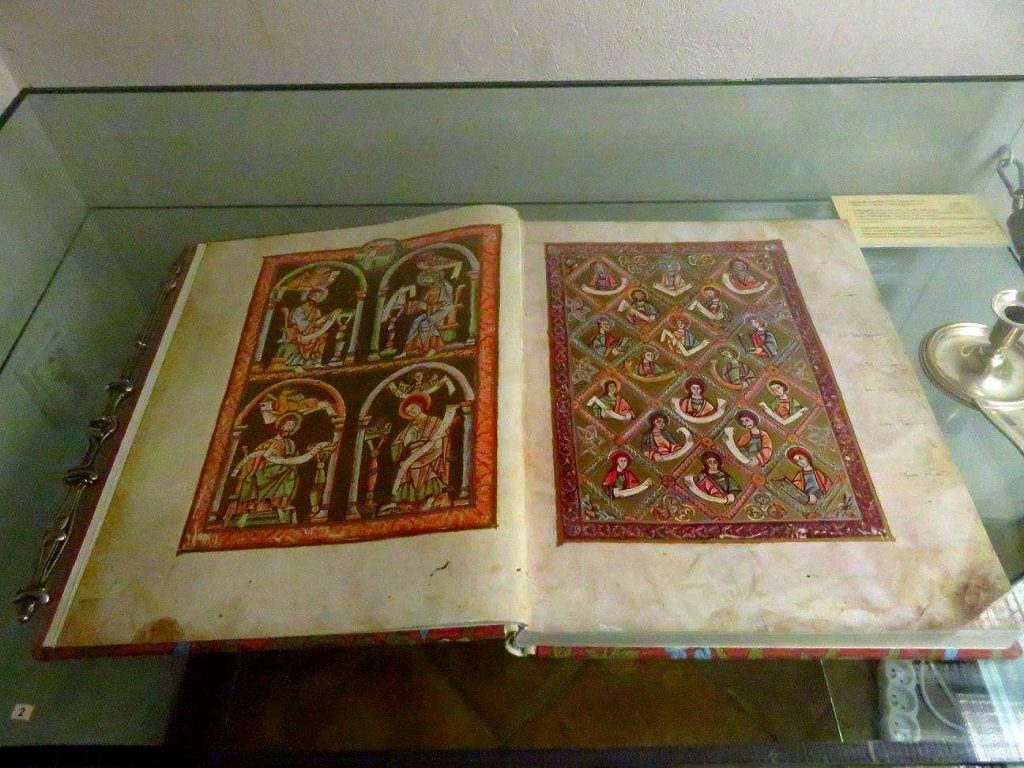
Charles IV pictured Prague as the new Jerusalem and sought relics wherever he went. He believed that the end of the world would come soon, and if Prague had the enough relics and churches, then the city and its residents would have special consideration on Judgment Day.
The church at Vyšehrad would have been a natural place for him to put some of the relics he acquired. The original of the Our Lady of the Rain icon is also supposed to have been placed in the church by Charles IV. It was either painted in northern Italy or done in that style.
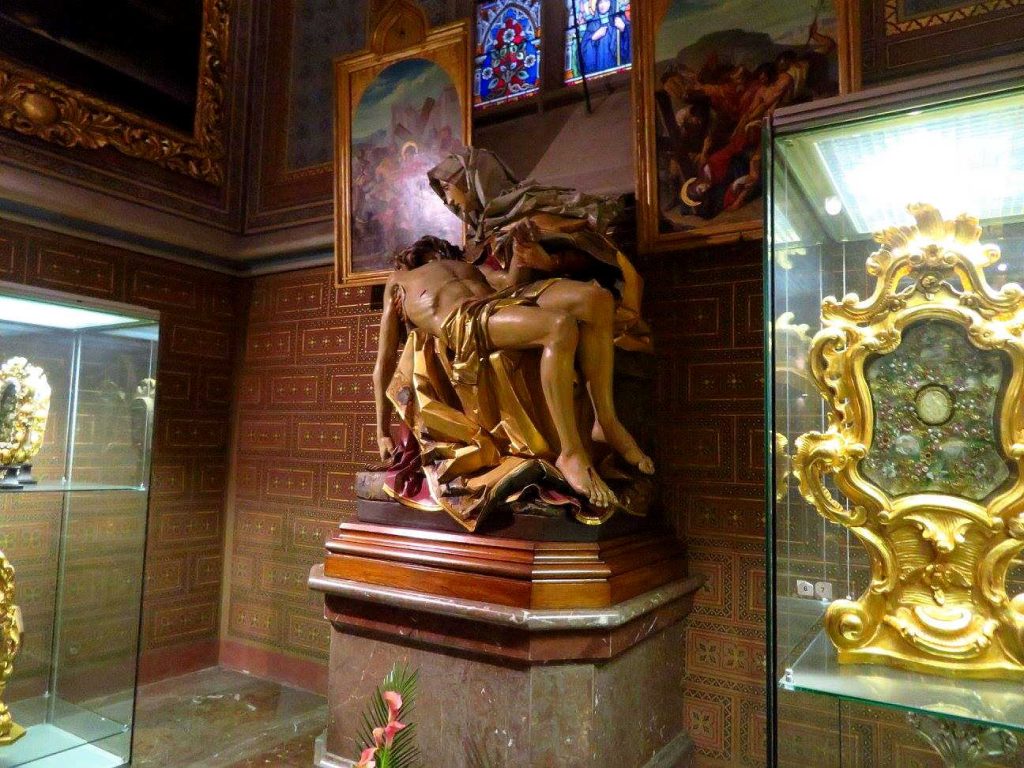
The current gold-leafed container for the shoulder blade of St. Valentine is thought to have been made at a later date, perhaps in the 17th or 18th century.
Even though its history is sketchy, the relic seems to be authentic. The bone was stored in its reliquary along with a hand-written authenticating document from the church.
Worldwide, some 10 Catholic churches scattered around Europe and North America. claim to have relics of St Valentine. The churches, however, do not have any special contact with each other, and there are no plans to do any DNA or other testing of the relics to see if they all come from the same body.
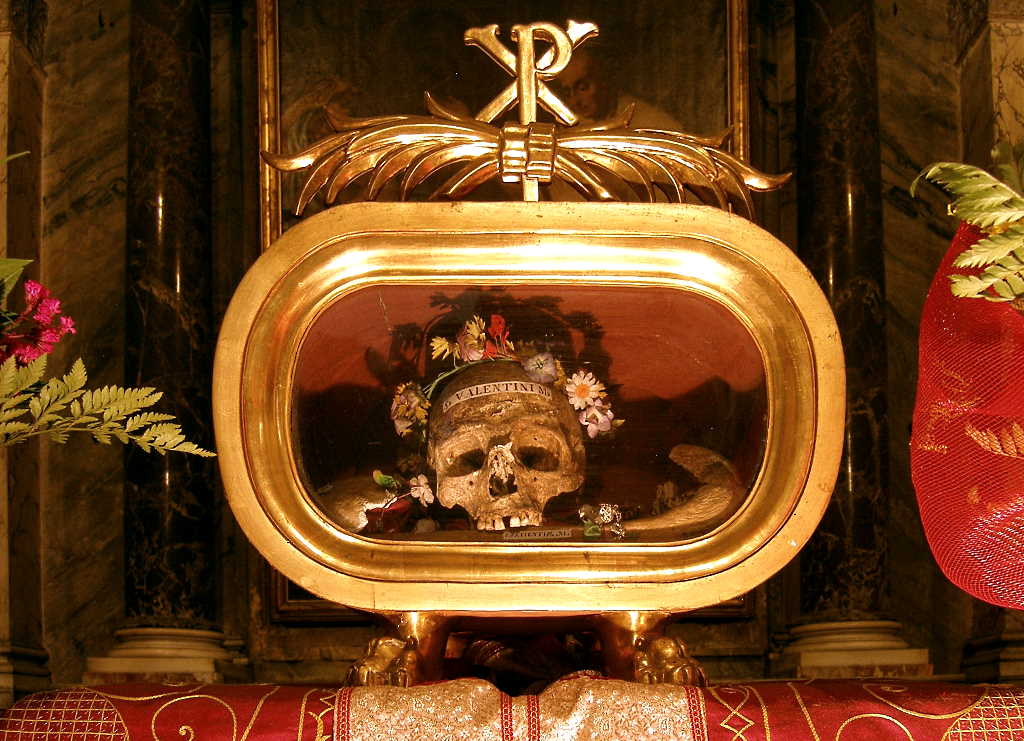
A flower-decorated skull allegedly from Valentine is in the Basilica of Santa Maria in Rome. A wooden box labeled in Latin and containing some bones including an arm is in a church in Glasgow. Another reliquary with a vessel containing his blood and other relics is in Whitefriar Street Church in Dublin, where they were sent by Pope Gregory XVI in 1836. Yet more relics are in Roquemaure, France.
In the US state of Missouri, the Old St. Ferdinand Church in the town of Florissant claims to have a hip bone that was a gift from a French king. A highly speculative wax effigy of the saint in a glass coffin holds the relic.
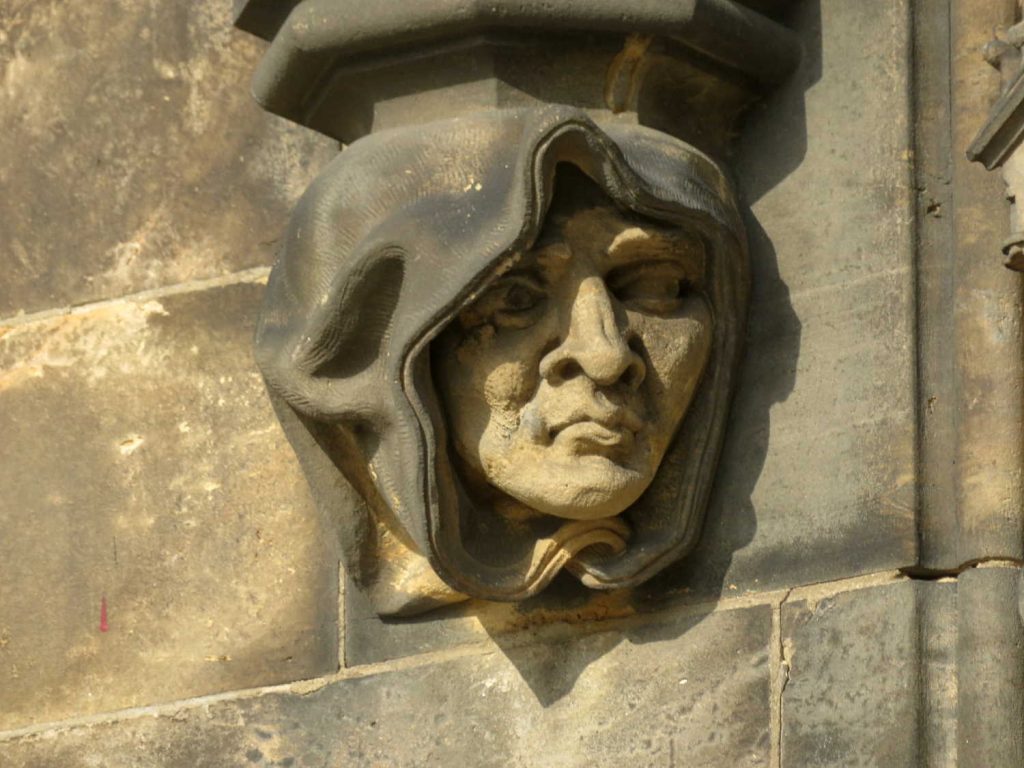
Not much is actually known about the historical St Valentine. There are several persons of this name in history in the third century. One was a bishop in Terni, near Rome. Another was a priest of the diocese of Rome. Both of them probably died as martyrs. Afterward there are other priests and martyrs of this name, and the stories have gotten mixed together.
Valentine was supposed to have held marriages in secret, in contravention of Roman law. Some soldiers, for example, were not supposed to marry. Another part of the story is that Valentine preached to members of the nobility of Rome and invited them to become baptized, during a time of persecution.
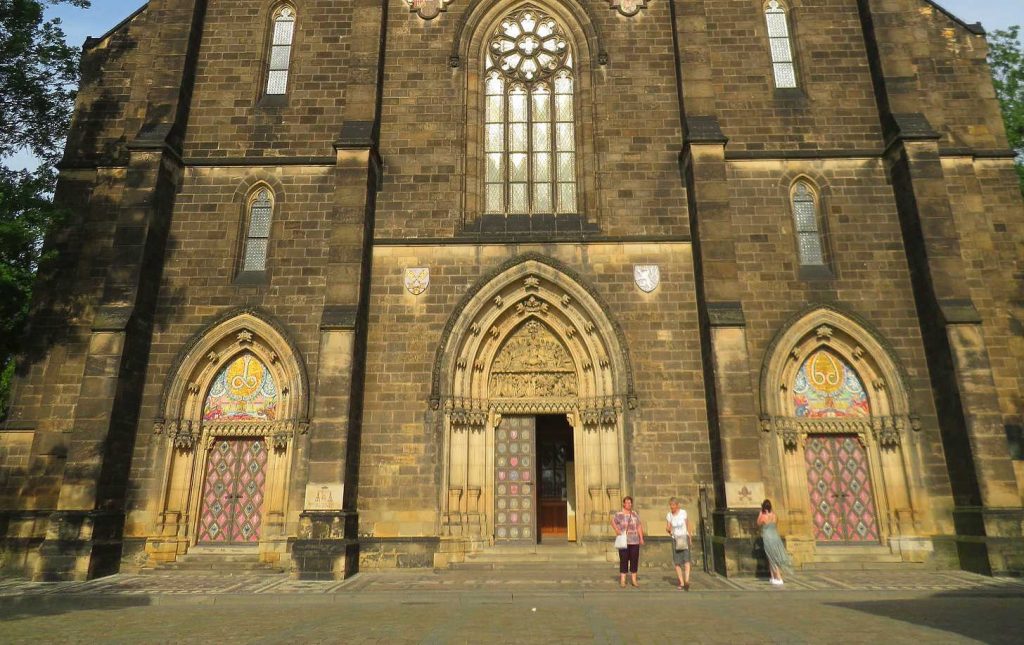
A tomb of a man called Valentine and described as a martyr was on the Via Flaminia close to the Milvian Bridge to the north of Rome. The year of his death is usually given as 269 or 270 AD, and his feast day was set at Feb. 14.
The stories are so vague that in 1969 the feast day for St Valentine was actually removed from the General Roman Calendar, the official list of saints’ feasts, by Pope Paul VI. Many other popular saints including Christopher were affected as well. Celebrations of St Valentine were restricted to “local calendars.”

Pope Benedict XVI in 2007 loosened some of the rules and allowed a return to the pre-1969 calendar when he also allowed mass to be celebrated in Latin under certain circumstances.
Some secular scholars say Valentine became associated with romance because the Romans had a mid-February custom where boys and girls participated in games in honor of a fertility goddess called Februata Juno.
The church often tried to adopt some aspects of pagan customs as a way to bring people into the faith, so Valentine, who had a convenient feast day, was drafted to take the place of the goddess.

Others claim that the custom of sending a romantic Valentine’s Day greeting on Feb. 14 comes from the notion that birds begin to pair on that date. The idea of birds choosing a mate on February 14 was part of English folklore as early as the year 1477.












 Reading time: 5 minutes
Reading time: 5 minutes 